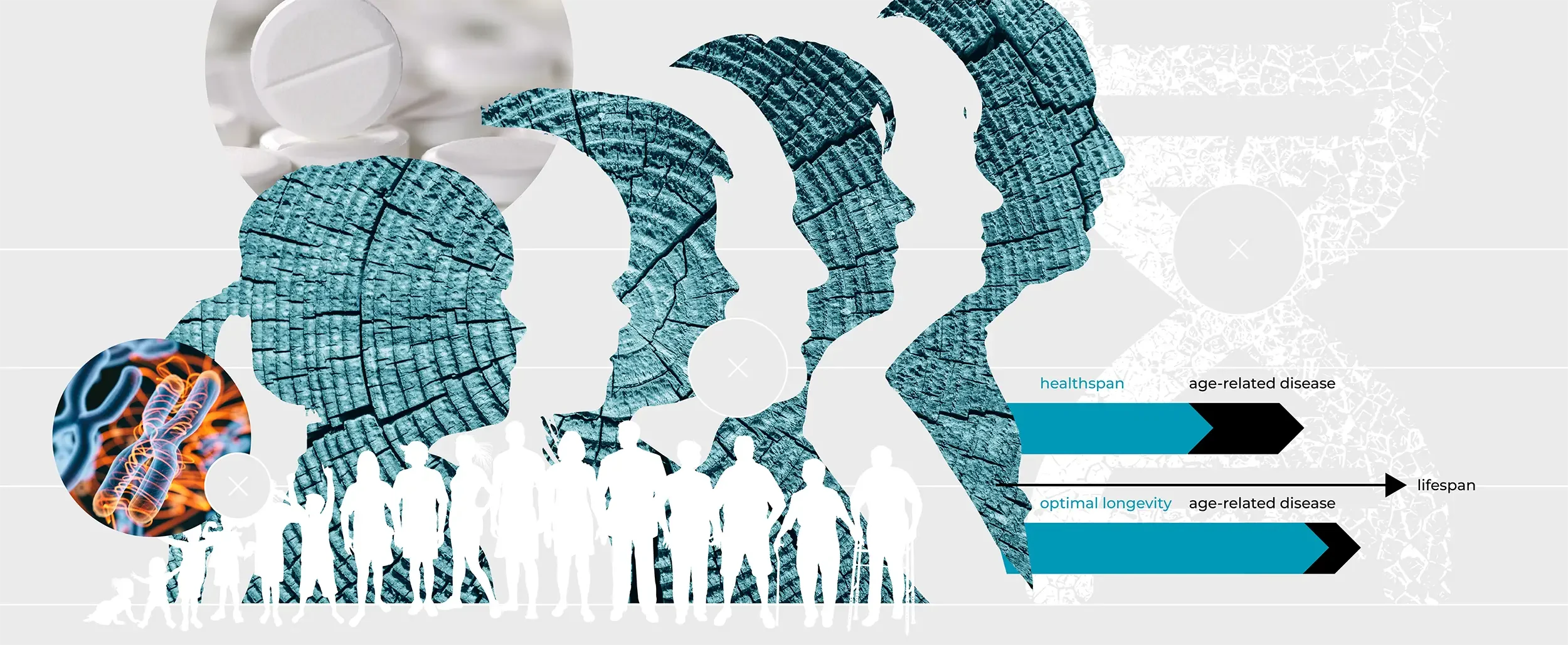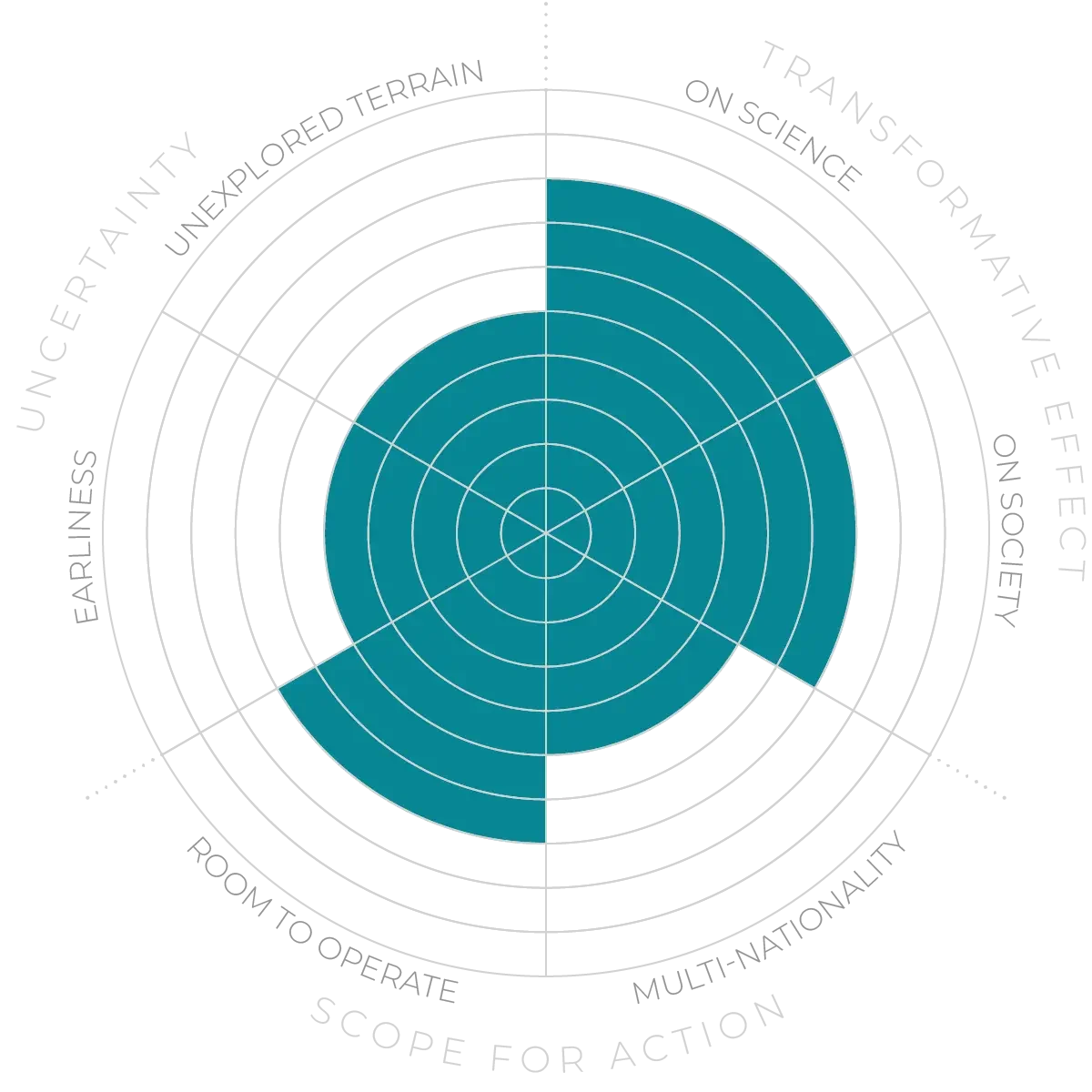5-yearhorizon
Beta testers and bigger data assist research
Datasets get bigger and more diverse. New sample analysis platforms make it possible to compare across cohorts for many different studies. More biomarkers are validated, and more companies use this information, making it available, initially, to private customers. Researchers begin to analyse molecular underpinnings of previously published clinical trials of successful ageing interventions, generating better models and driving deeper understanding.



